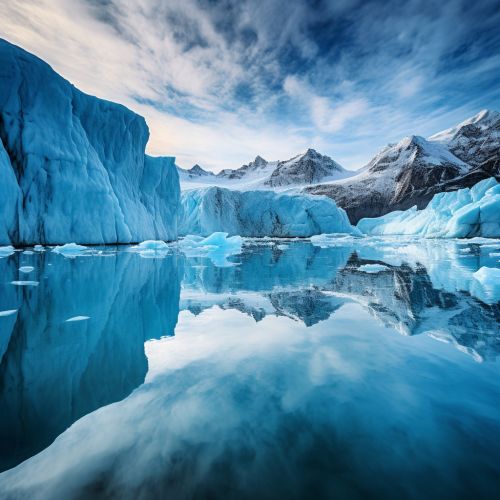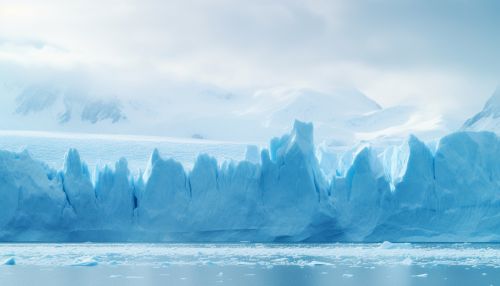The Science of Earths Glacial Cycles and Paleoclimate
Introduction
The study of Earth's glacial cycles and paleoclimate is a complex and fascinating field within the broader discipline of Earth sciences. It involves the examination of past climate conditions on Earth, with a particular focus on the cyclical expansion and contraction of the planet's ice sheets. This article delves into the scientific understanding of these phenomena, exploring the processes, evidence, and implications of glacial cycles and paleoclimate.


Glacial Cycles
Glacial cycles, also known as ice ages, are periods in Earth's history when significant global cooling results in the expansion of continental and polar ice sheets and alpine glaciers. These cycles are primarily driven by changes in Earth's orbit and tilt, known as Milankovitch cycles, which affect the amount of solar radiation the planet receives.
Milankovitch Cycles
The concept of Milankovitch cycles was first proposed by Serbian geophysicist Milutin Milankovitch in the early 20th century. These cycles are characterized by three primary changes in Earth's orbit and axial tilt: eccentricity, obliquity, and precession.
- Eccentricity refers to the shape of Earth's orbit around the sun, which shifts from more circular to more elliptical over a cycle of about 100,000 years.
- Obliquity, or axial tilt, is the angle of the Earth's tilt in relation to its orbit. This angle varies between 22.1 and 24.5 degrees over a cycle of approximately 41,000 years.
- Precession is the wobble of Earth's axis, similar to the motion of a spinning top. This wobble has a cycle of around 26,000 years.
These cycles result in variations in the amount of solar radiation reaching different parts of the Earth at different times, leading to periods of global cooling (glaciation) and warming (interglaciation).
Evidence of Glacial Cycles
Evidence of glacial cycles is found in various geological records. Ice cores, for example, provide a direct record of past atmospheric conditions, including temperature and greenhouse gas concentrations. These cores, extracted from ice sheets and glaciers, contain layers that correspond to annual snowfall. By analyzing these layers, scientists can reconstruct a detailed history of climate over hundreds of thousands of years.
Sediment cores from the ocean floor also provide evidence of glacial cycles. During periods of glaciation, large amounts of rock and soil are eroded by ice and carried to the oceans. This material accumulates on the ocean floor, forming layers that can be analyzed to reveal the timing and extent of past glaciations.
Paleoclimate
Paleoclimatology is the study of past climates, extending back beyond the limits of human records. By examining natural records such as ice cores, tree rings, and sediment deposits, paleoclimatologists can reconstruct a picture of Earth's climate history, including the timing, causes, and effects of major climate changes.
Paleoclimate Proxies
In paleoclimatology, scientists often rely on 'proxies' – natural recorders of climate variability. These proxies provide indirect evidence of past climate conditions and include a wide range of natural archives.
- Ice cores, as mentioned earlier, provide a detailed record of temperature, precipitation, and atmospheric gas concentrations over hundreds of thousands of years.
- Tree rings can reveal information about temperature, precipitation, and even atmospheric carbon dioxide levels over the past few thousand years.
- Sediment cores, both marine and lake, contain a variety of proxies such as pollen, microfossils, and chemical isotopes that can provide information about past temperature, precipitation, ocean circulation, and vegetation changes.
Paleoclimate Modeling
Climate models are an essential tool in paleoclimatology, allowing scientists to simulate past climate conditions and understand the mechanisms driving climate change. These models use mathematical equations to represent physical processes such as radiation, convection, and the movement of air and water. By inputting data from paleoclimate proxies, scientists can test hypotheses about the causes of past climate changes and improve predictions of future climate.
Implications of Glacial Cycles and Paleoclimate
Understanding Earth's glacial cycles and paleoclimate is crucial for several reasons. First, it provides a long-term perspective on the current climate change, helping scientists determine the natural variability of Earth's climate and the extent to which recent changes are unprecedented.
Second, knowledge of past climate conditions can improve the accuracy of models used to predict future climate. By testing these models against the paleoclimate record, scientists can refine their understanding of the processes that drive climate change.
Finally, studying past climates can help us understand the potential impacts of future climate change. For example, research on past periods of warming can provide insights into the possible consequences of current global warming, such as sea-level rise, changes in precipitation patterns, and impacts on biodiversity.
